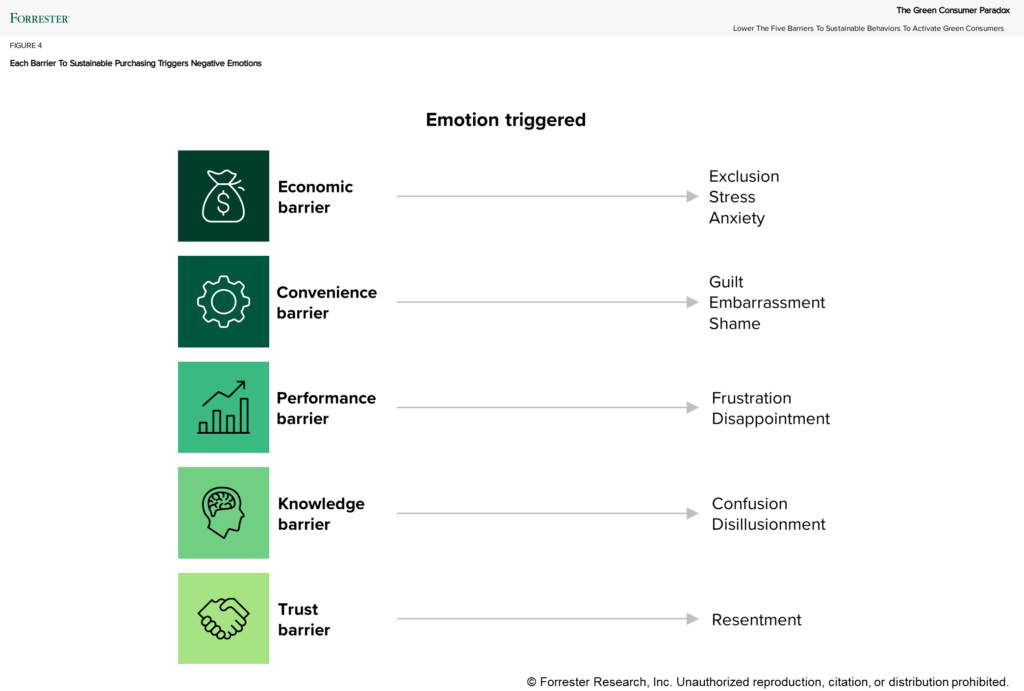The Green Consumer Paradox
Many consumers want to act sustainably but struggle to do so. The growing cost of living and high inflation rates are limiting environmentally conscious consumers’ ability to purchase according to their values. Despite reporting willingness to pay a premium for greener products, few actually purchase sustainable products. The resulting cognitive dissonance can trigger unease, discomfort, anxiety, and guilt. We have just published a new report, The Green Consumer Paradox, to help B2C marketing executives understand the gap between consumers’ sustainability intentions and actions and show how to break down five key barriers to encourage sustainable behaviors.
We have identified five common barriers impeding widespread customer adoption of sustainable offerings and behaviors, and we know from behavioral science that it’s critical to understand the emotional and psychological dimensions associated with each barrier.

Here are the five barriers:
- The economic barrier. Twenty-nine percent of European (and up to 39% of US) online adults consider that a low-cost product is more valuable than an environmentally friendly one.
- The convenience barrier. Consumers usually show a strong preference for convenience over sustainability. Roughly one in three online adults in Europe consider a product that saves time and hassle more valuable than a sustainable one. “Making it easy and simple for consumers is way too often a forgotten step,” said Eric Singler, CEO of BVA Nudge Consulting and author of “Green Nudge.”
- The performance barrier. Many consumers perceive sustainable products as less effective, particularly products with strength-related attributes. One out of five European online adults think that environmentally friendly products do not perform as well as non-environmentally friendly products.
- The knowledge barrier. Despite growing awareness of environmental challenges, consumers still lack a clear understanding of their own impact and how to change. Only 36% of European online adults feel confident in knowing what products to purchase to reduce their environmental footprint.
- The trust barrier. Consumers lack trust in brands’ claims. While 69% of European online adults believe that companies are responsible for protecting the environment, only 30% trust companies’ commitments to reducing climate change.
Decide on how passive or proactive a stance you will take on helping green consumers close the gap between intent and action. You can:
- Understand your customers’ perceptions to unlock environmental value.
- Make sustainability tangible by contextualizing it in the customer journey.
- Master behavioral science to nudge customers in the most relevant context.
Since there is no one-size-fits-all approach, B2C marketers should develop contextual strategies to nudge customers toward more sustainable choices by closely examining each of the five barriers for its industry, region, and customer base.
Clients willing to know more about this can read the full report here and schedule a conversation with me to discuss this more in depth.
